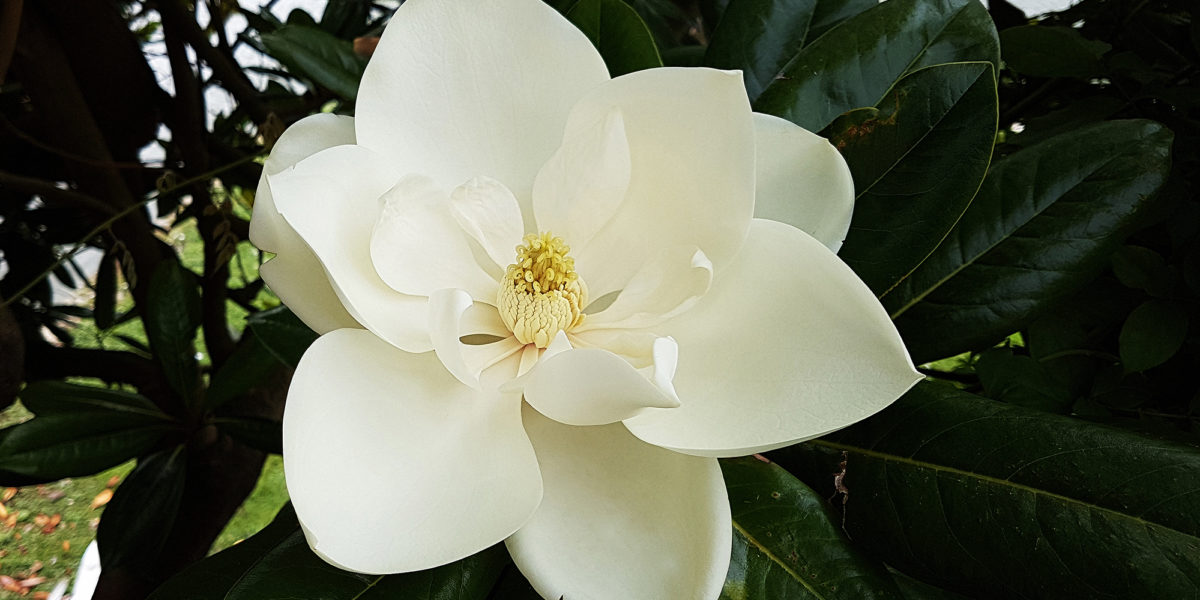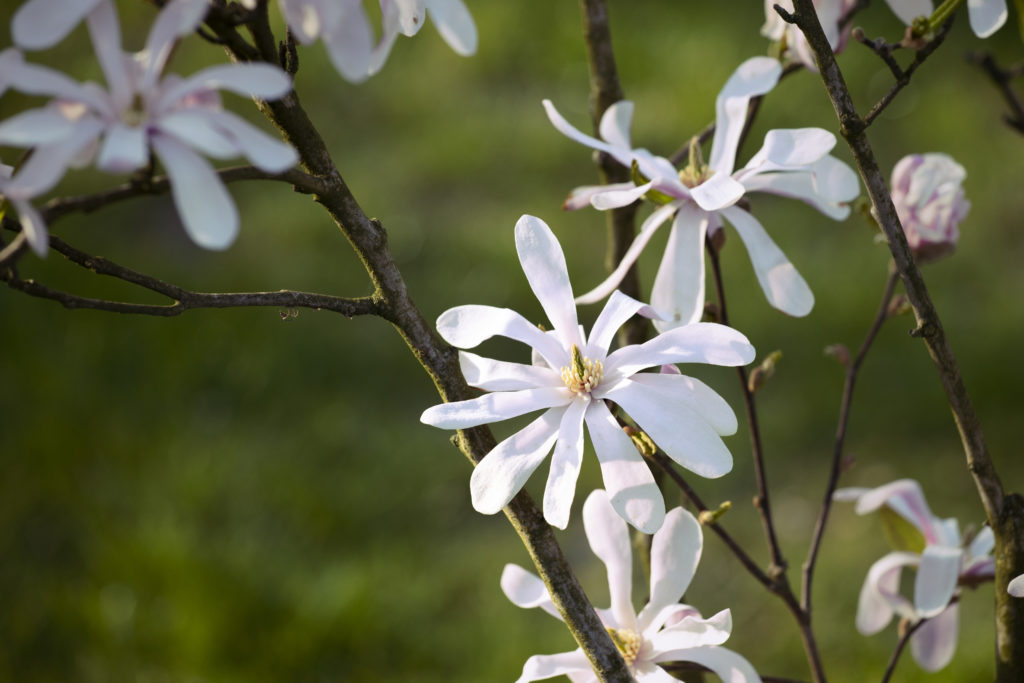
Magnolia
Quick facts and care essentials

• Evergreen or deciduous
• Zones vary
• Full sun or partial shade
• Regular watering
• Growth rate: slow to moderate
These magnificent flowering trees and shrubs offer remarkable variety in color, leaf shape, and plant form. Below, we give just one example each of deciduous and evergreen kinds; many other species are available at well-stocked nurseries.
Plant magnolias in fairly rich, well-drained, neutral to acid soil. They have shallow, fleshy roots that are easily damaged by digging or soil compaction. Best locations are in a lawn (leave a wide grass-free area around the trunk) or shrub border. Stake single-trunked or very heavy trees to prevent them from being rocked by wind, which will tear the sensitive roots.

Photo by Saskia Acht / Getty Images
Southern magnolia (M. grandiflora). Zones 4-12, 14-24, 26-33. Evergreen. Reaching 80 feet tall and spreading to 40 feet wide, this statuesque tree offers year-round beauty. The thick, leathery, deep green leaves are ovals up to 8 inches long, often with rust-colored down on their undersides. Huge, pure white, powerfully fragrant flowers appear in late spring and summer (trees may not bloom until they are 10 years old or older). Surface roots will lift and crack nearby pavement, and the roots plus the dense shade cast by the canopy will eventually defeat lawn planted under the tree.
Starry Magnolia (M. stellata) Magnolias may be emblematic of the South, but many of us Westerners can enjoy them, too, as they will grow well in Zones 7-10. (Actually, some can take temperatures approaching zero, but those varieties need a lot of space.) Star magnolia is among the earliest to bloom; their fragrant, star-shaped blossoms emerge in late winter, a herald of spring before the leaves are even out. Another small magnolia that will add languid charm to your yard is the ‘Teddy Bear’ variety. It grows up to 20 feet tall but doesn’t usually spread to more than 12 feet in diameter, making it the magnolia most suitable for small spaces. Beware that the root system of a magnolia can be much larger than the canopy, so this isn’t the tree for a micro-plot. If you are able to make ‘Teddy Bear’ work for you, the reward is a tree that stays green all year and produces sweet-smelling big white blooms every spring.
Saucer magnolia (M. soulangiana). Zones 2-10, 12-24, 28-41. Deciduous. Often erroneously called tulip tree, this magnolia grows slowly to 25 feet high and wide. The goblet-shaped blossoms are up to 6 inches across and vary in color from white to pink or purplish red, depending on the variety; they open before the green, rather coarse, 4- to 6-inch-long leaves expand. Late frosts can damage buds and blossoms; in cold-winter areas, plant late-flowering selections such as ‘Lennei’ or ‘Alexandrina’.
